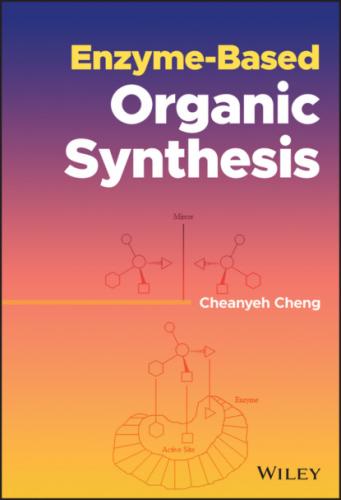It is noted that the hybrid toluene/biphenyl dioxygenase (TDO/BPDO) in Escherichia coli encoded by the todC1 gene of P. putida F1 and the bphA2A3A4 genes of Pseudomonas pseudoalcaligenes KF707 was able to biotransform monocyclic aromatic compounds including benzene, toluene, styrene, p‐xylene, acetophenone, propiophenone, butyrophenone, and trifluoroacetophenone to their corresponding cis‐dihydrodiols (Scheme 2.14). Subsequently, these cis‐dihydrodiols were bioconverted by the bphB (dihydrodiol dehydrogenase) expressed in E. coli cells in addition to todC1‐bphA2A3A4 to produce their monocyclic arene‐diols [61].
Scheme 2.14 Catabolic pathways of monosubstituted benzene to diol via cis‐dihydrodiol.
Alkaloid pancratistatin is tested as anticancer, antiviral, and antiparasitic agents. The cis‐dihydroxylation of bromobenzene by TDO from the bacterium strain P. putida 39/D to produce cis‐bromocyclohexadienediol was utilized to chemically synthesize the key intermediate bromoazide (Scheme 2.15) for the preparation of pancratistatin analogs [62]. (−)‐Conduramine C‐4 was also synthesized in six steps from the whole‐cell fermentation of bromobenzene with P. putida 39/D in 23% overall yield [63].
The same chemoenzymatic method has been used for the synthesis of certain alkaloids and terpenoids by starting with the whole‐cell biotransformation of a variety of monosubstituted benzene to form the corresponding cis‐1,2‐dihydrocatechol using TDO expressing P. putida 39‐D or E. coli JM109 (pDTG601) [64, 65]. E. coli JM109 (pDTG601) was also used for the dihydroxylation of methyl 2‐iodobenzoate to give two cis‐dihydrodiol metabolites in a molar ratio of 4:1 (Scheme 2.16) [66]. The minor product in the diol mixture was further chemically transformed to an alcohol intermediate for the asymmetric preparation of kibdelone C and its congeners.
Ten 1,4‐disubstituted benzene substrates using P. putida UV4 as a source of TDO have been biotransformed to yield the corresponding cis‐dihydrodiol metabolites [67]. The yields of these cis‐dihydrodiols were generally lower than those obtained from the corresponding monosubstituted benzene substrates. The enantiomeric excess (ee) values were determined by a combination of methods to show their enantiopurity. The cis‐dihydroxylation of meta‐substituted phenols (m‐phenols) catalyzed by TDO, an arene dioxygenase from mutant strain of P. putida UV4, yields the corresponding cyclohexenone cis‐diol metabolites and several of their cyclohexene and cyclohexane cis‐triol derivatives [68]. Using the same bacterium strain and p‐xylene as the substrate, the major biotransformation product was the corresponding cis‐1,2‐dihydrodiol (95% relative yield) along with the two minor products, catechol (1% relative yield) and cyclohexenone cis‐diol (4% relative yield) via the intermediate p‐xylenol (Scheme 2.17). Another metabolite of p‐xylenol with TDO present in P. putida UV4 was o‐quinol dimmer (Scheme 2.17) [69]. However, p‐xylene was first catalyzed to cis‐p‐xylene dihydrodiol and further undergone dehydration to give 2,5‐dimethylhydroquinone by a novel o‐xylene dioxygenase from Rhodococcus sp. strain DK17 [70]. cis‐Dihydroxylation of aromatic carboxylic acid such as benzoic acid with mutants of Alcaligenes eutrophus B9 or P. putida U103 produces a diol containing a tertiary alcohol moiety is another interesting case for enantioselective synthesis, which demonstrates two stereogenic centers can be introduced simultaneously during organic synthesis [71]. A series of benzoate esters have been studied for the enzymatic dihydroxylation by whole‐cell fermentation with E. coli JM109 (pDTG601) to produce their corresponding cis‐cyclohexadienediols except for n‐butyl and t‐butyl benzoates [72]. The diols obtained from the enzymatic dihydroxylation of benzoate esters serve as intermediates for the synthesis of pseudo‐sugars, amino cyclitols, and bicyclic ring systems.
Scheme 2.15 Chemoenzymatic preparation of pancratistatin analogs.
Scheme 2.16 Whole‐cell fermentation of methyl 2‐iodobenzoate for organic synthesis.
Naphthalene dioxygenase (NDO), a Rieske dioxygenase [73, 74], from Pseudomonas strain NCIB9816‐4 catalyzes the cis‐hydroxylation of naphthalene to cis‐(1R,2S)‐dihydroxy‐1,2‐dihydronaphthalene (naphthalene cis‐dihydrodiol) (Scheme 2.18) [75, 76]. Incubation of naphthalene with E. coli BL21(DE3) harbored with a recombinant expression plasmid of the Rhodococcus sp. strain DK17 o‐xylene dioxygenase also produces cis‐1,2‐naphthalene dihydrodiol [70]. In the same manner, the recombinant E. coli JM109(DE3)(pDTG141) expressing the NDO from Pseudomonas sp. NCIB9616‐4 has been used for the whole‐cell biotransformation of a series of azaarene compounds. The study showed that several bicyclic azaarenes can be catalyzed well by NDO to give cis‐dihydrodiol derivatives [77]. In addition, the DK17 o‐xylene dioxygenase catalyzes the cis‐dihydroxylation of biphenyl to form cis‐2,3‐biphenyl dihydrodiol (Scheme 2.19) [70]. BPDOs from mutant bacterial strains that lack the corresponding diol dehydrogenase enzymes can be utilized to transform polycyclic arenas such as anthracene and benz[a]anthracene to cis‐hydrodiols and acetonide derivatives of the cis‐dihydrodiols of biphenyl and phenanthrene to enantiopure bis(cis‐dihydrodiol) metabolites [78]. The produced cis‐diols in turn have been widely used for organic synthesis.
Scheme 2.17 Toluene dioxygenase catalyzed cis‐dihydroxylation of phenols toward catechol, cyclohexenone cis‐diol, and o‐quinol dimmer metabolites.
Scheme 2.18 Naphthalene dioxygenase catalyzed cis‐dihydroxylation of naphthalene.
